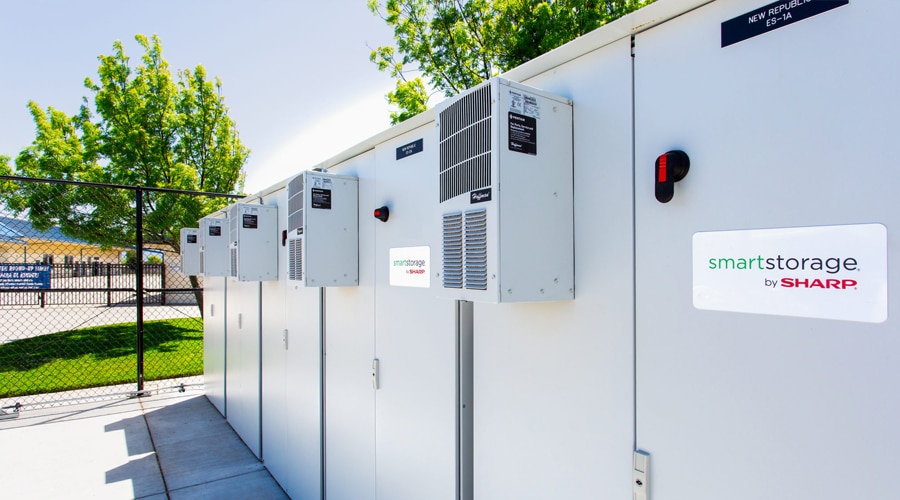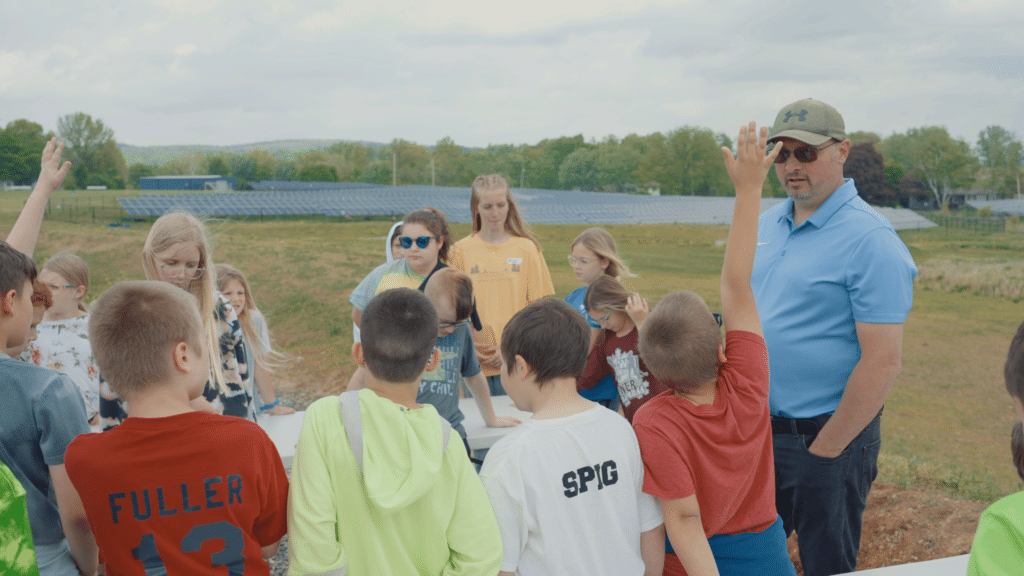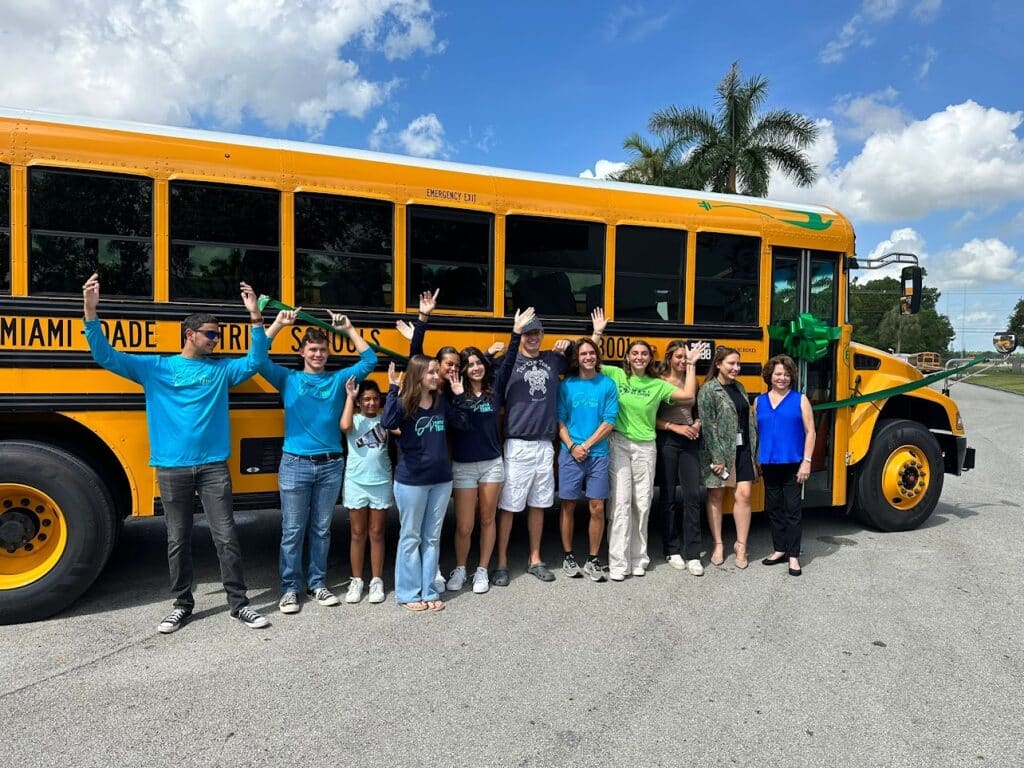This case study was originally published in the 3rd edition of Brighter Future: A Study on Solar in U.S. K-12 Schools (2020). This story was updated September 2022.
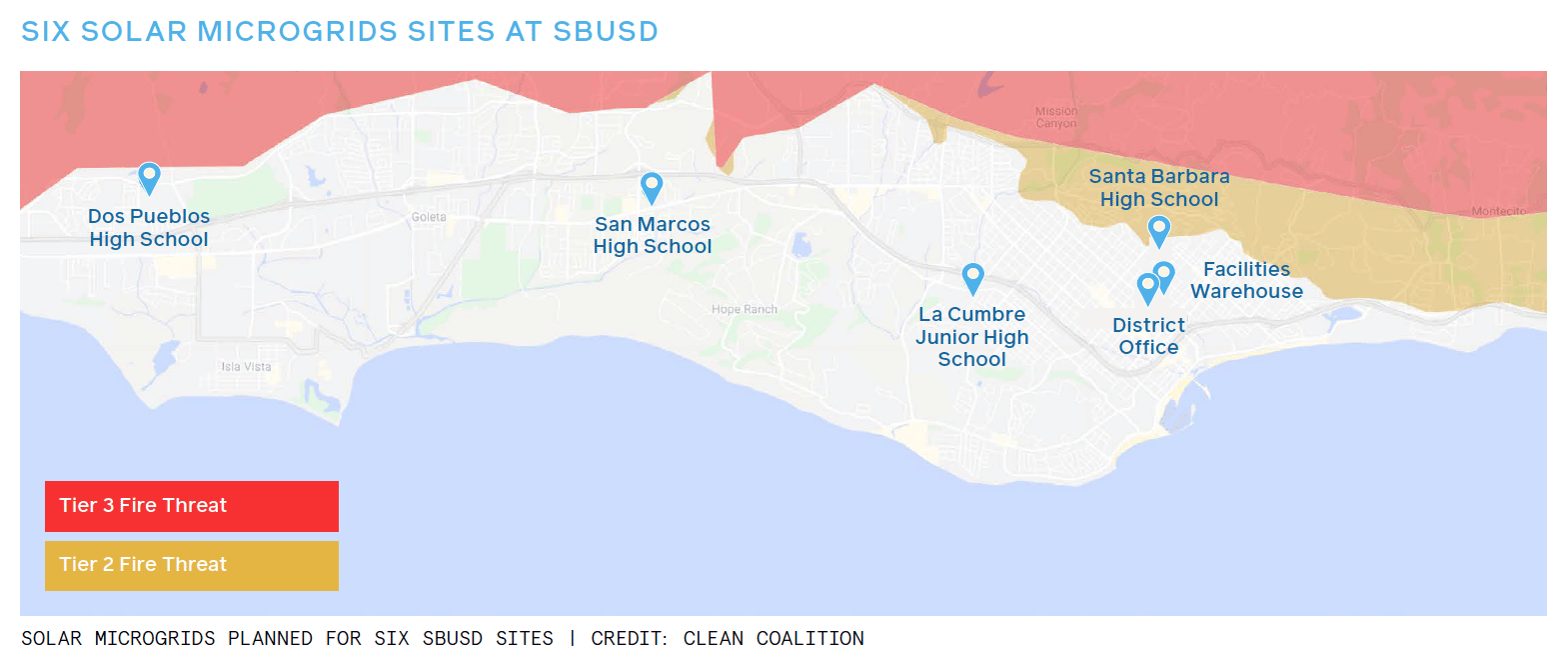
When Santa Barbara Unified School District (SBUSD) students came back to school this year, they were welcomed with newly installed solar canopies at fourteen school sites that will power close to all of the district’s electricity needs. During the school year, battery storage will be installed at six of those sites to form solar-powered microgrids that can store energy onsite and provide power to the buildings when the grid goes down.
-
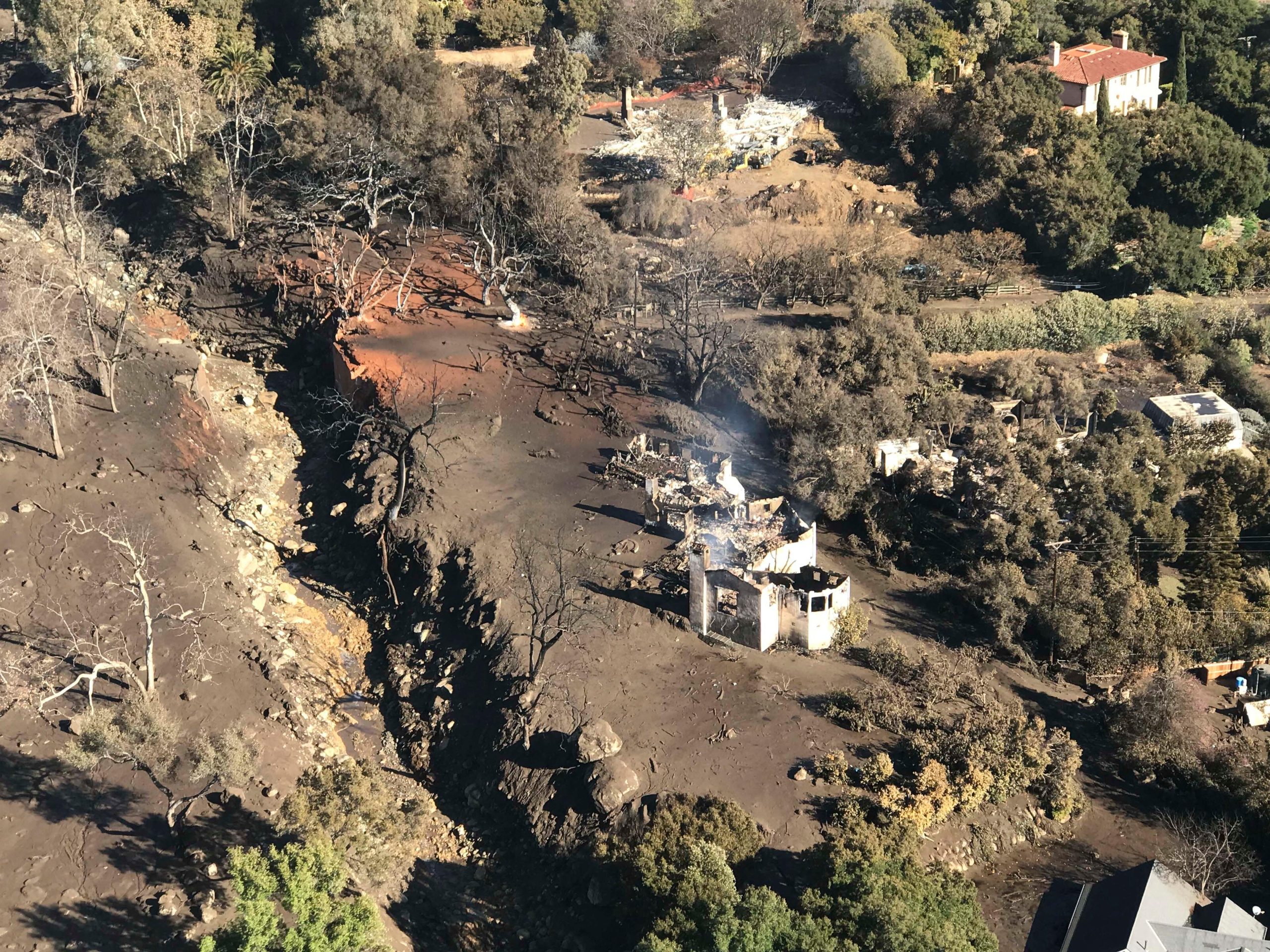
Mudslide in Santa Barbara County in January 2018
The district began planning for energy resilience after historic wildfires and mudslides devastated the Montecito community in Santa Barbara County in January 2018. The schools were called on to serve as safe havens and emergency response centers. Nearly five years after that climate emergency, the school district is prepared for future power outages with energy resilience hubs that can keep schools operating and provide needed services for community members.
Two years before the disastrous mudslides occurred, a newly elected member of the Board of Education, Laura Capps, had begun advocating for the district to become more environmentally sustainable. As a longtime Santa Barbara resident, she was proud of Santa Barbara’s history as the birthplace of the first Earth Day celebration in 1970. She thought the school district could be doing more to protect the planet for future generations, and she wanted to change the fact that none of the schools in the district had solar panels. Capps discovered that one neighboring district had cut electricity costs by almost $1 million annually by producing its own solar energy, prompting her to become the champion for installing solar arrays at SBUSD.
Although Capps had repeatedly brought up the benefits of solar energy at board meetings and budget discussions, she could not get the support of other board members and district leaders, who were more concerned with competing priorities. According to Capps, “there was the feeling that if you focus on sustainability you are taking your eye off the ball of literacy — the more fundamental mission of a school system.”
Only after natural disaster struck the community did Capps finally get agreement to move forward with solar arrays and to develop a comprehensive energy resilience plan. In 2019, the district began to move forward with energy resilience plans as the threat of wildfires around California caused statewide utilities to de-energize power lines to prevent from sparking wildfires. Millions of Californians lost power that year due to these public safety power shut-offs triggered by threats of wildfires.
-
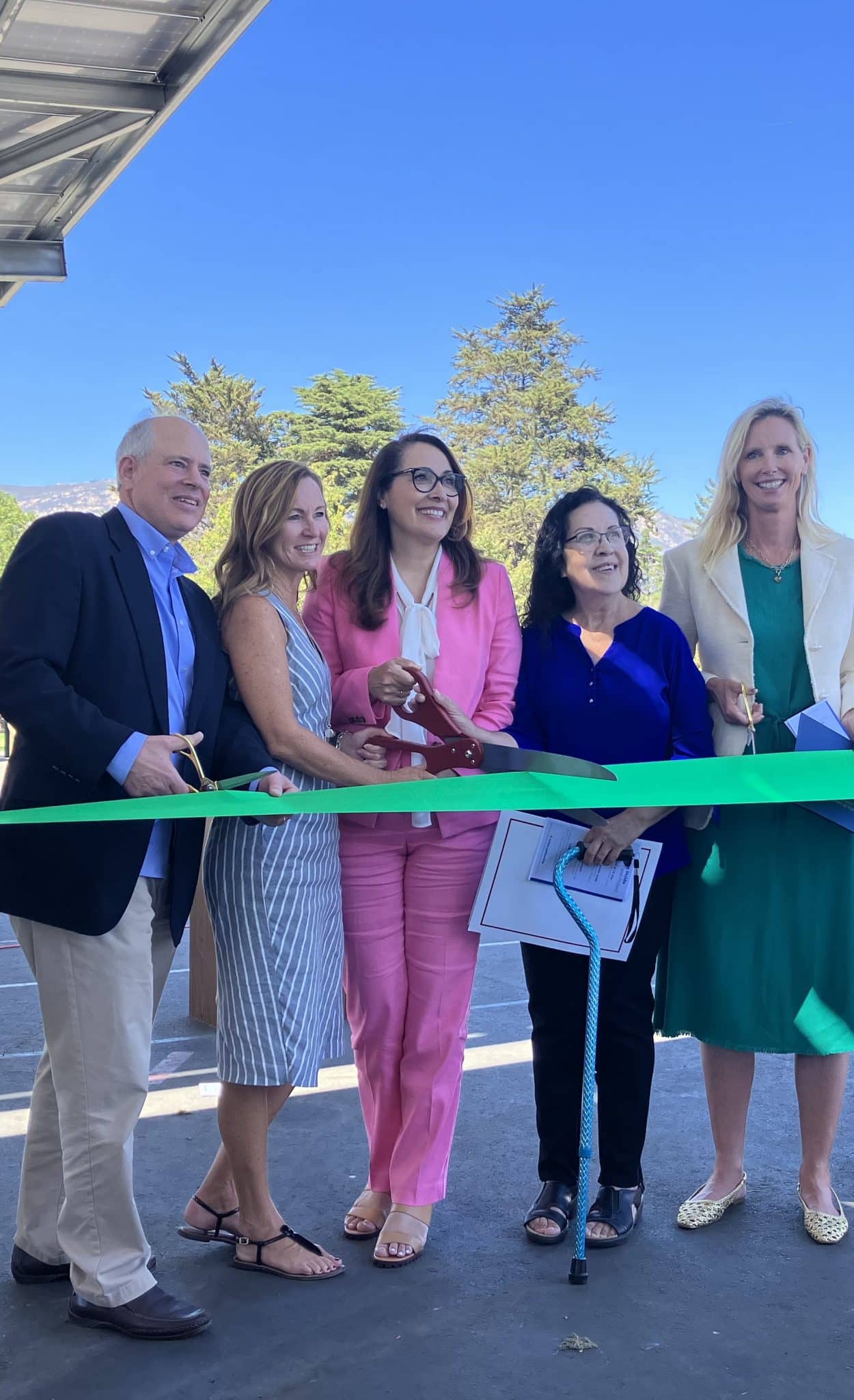
Photo credit: Clean Coalition
Santa Barbara Unified School District teamed up with nonprofit Clean Coalition to develop plans for state-of-the-art, solar-powered microgrids that deliver a high level of energy resilience and diminished electricity costs. The district now has 4.2 megawatts (MW) of solar capacity across fourteen sites, including twelve schools, a district office, and a food storage warehouse. The solar canopies will power 94-98% of the district’s electricity needs. The battery storage being installed at six of the fourteen sites will have 1.9 MW power rating/3.8 MWh battery capacity. The battery storage can support all of the electricity loads of those buildings when solar energy is plentiful.
The district financed the project through a 28-year power purchase agreement (PPA) with the project developer Engie, which required no upfront capital costs paid by the district. In total, the projects are estimated to save the school district a total of $7.8 million throughout the life of the 28-year agreement. According to Clean Coalition, the solar-powered microgrids provide an additional $6.5 million in value-of-resilience (VOR), which is the monetary value of keeping the building powered.
It’s a win for our finances — this project will save $8 million over the lifetime of the project, which is money that can go directly back into the classroom. And it is clearly a win for our community — this will help us reach Santa Barbara city’s target of zero emissions. Finally, we are doing our part by transitioning to renewable energy.
Laura Capps, SBUSD Board of Education












